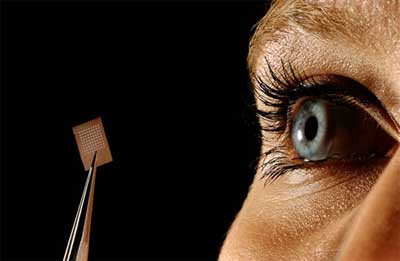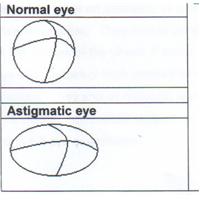London: British scientitsts are working on a proecdure to use stem cells as a cure for age-related macular degenertion, a leading cause of blindness in the elderly.
The first 45-minute operation would use stem cells grown in a lab to cure the dry form of the diseease and it is estimated that the procedure will be available within five years.
The improvement in sight is likely to be great enough for the the blind to regain the ability to carry out everyday tasks such as reading or driving.
The pioneering stem cell surgery tackles age-related macular degeneration (AMD), the most common cause of blindness in the elderly. There are about 300,000 sufferers in this country and the number is expected to treble in the next 25 years to around one million as the population ages.
AMD, which affects a quarter of over-60s in the UK and more than half of over-75s to some degree, occurs in two forms. While the ‘wet’ form can be combated with drugs, there is no treatment for the ‘dry’ form which accounts for 90 per cent of cases.
The treatment centres on human embryonic stem cells grown in a laboratory. These are ‘blank’ cells with the power to turn into different cell types and are used to create small patches identical to the cells damaged in the eyes of AMD sufferers.
Packaged into a syringe, the patch is injected into the back of the eye where it replaces damaged cells and restores sight.
The technique is being developed by scientists and doctors from University College London, Moorfields Eye Hospital, also in London, and Sheffield University, working together in the London Project to Cure Blindness.
Their work has been boosted by a £ 4million donation from an anonymous American benefactor.
Project director Professor Pete Coffey said: ‘This could have a tremendous effect on a huge population who have no current therapy.’
The technique has been tested on rats suffering from a condition similar to AMD and their sight was restored.
Further evidence that the technique is likely to succeed comes from human operations. In these, the researchers restored vision using healthy cells taken from the corner of the patient’s own eye.
In some cases, the transplants were so successful that the patients were able to read, cycle and use a computer.
However, such surgery is extremely complex and time-consuming and so unlikely to be suitable for large-scale use. Using ‘readymade’ patches of cells would greatly simplify the operation, making it suitable for use on millions.
The scientists are now working on making such patches, measuring just four by six millimetres, which will be injected into the back of the eye under local anaesthetic in an procedure lasting between 45 minutes and an hour. The patient, who would have to take drugs to stop the cells from being rejected by the body, could go home the same day. After two to three weeks, vision should start to improve.
It is not yet known how long the effects will last but the patients who had transplants of their own cells are still benefiting from the treatment which took place two and a half years ago. While the patches are most likely to benefit those in the early stages of AMD, the researchers believe it should be possible to adapt them to treat those in later stages.
It is hoped that the technique might also benefit those who have lost their sight as a complication of diabetes.
Consultant surgeon Lyndon da Cruz of Moorfields Eye Hospital said that within ten years the procedure could become as commonplace as cataract surgery.
He said: ‘If we can do a single procedure in a person under local anaesthetic in 45 minutes, it’s feasible.
‘The science is something we can work on but the surgery has to be something we can deliver to many people.’
Eye experts said the research offered real hope to sufferers of AMD. Tom Bremridge of the Macular Disease Society said: ‘This development is exciting and encouraging for current and future generations of AMD patients.
‘While treatments for “wet” AMD are advancing rapidly, sadly, patients with “dry” AMD have had no prospect of any viable therapy.’
Professor Alistair Fielder, of the charity Fight for Sight, said the research represented ‘a real chance to tackle an untreatable condition and bring hope to many’.
He added: ‘It is marvellous to think that clinical trials could start within four years.’
Although many believe it is wrong to use embryonic stem cells – plucked from an embryo in the first days of life – in medicine, sophisticated laboratory techniques mean it should be possible to generate a treatment for millions of people from cells derived from a single embryo.
Stem cell research offers hope for treating and curing a host of conditions.
In recent work, British experts have succeeded in growing a ‘ miniliver’ – a tiny bundle of liver cells – from stem cells, while Israeli scientists have grown a tiny section of beating heart tissue from stem cells gleaned from human embryos.



